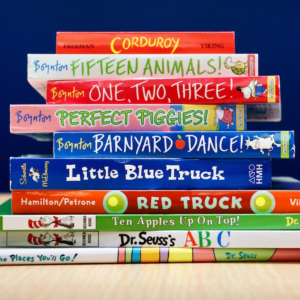Doctors’ Notes
BackTeaching Beginning Reading Skills
We asked reading specialist Mark Beck to write a note teaching children to read…
 Do you have a four- or five-year old child approaching or already in kindergarten? Do you find the world of early reading a confusing maze with complex, overlapping, and seemingly contradictory ideas? If your child is already in kindergarten, are you beginning to feel disconnected to her routine and unaware of what she’s being taught in school?
Do you have a four- or five-year old child approaching or already in kindergarten? Do you find the world of early reading a confusing maze with complex, overlapping, and seemingly contradictory ideas? If your child is already in kindergarten, are you beginning to feel disconnected to her routine and unaware of what she’s being taught in school?
You already know the importance of reading to your child every night. But you may be uncertain about how to work with your child at home to better prepare her for kindergarten. If you are, you’re not alone
In this note, we’ll talk about some initial building blocks for children approaching, or just in, kindergarten. We’ll focus on three areas: The Alphabetic Principle, Phonemic Awareness, and Letter Identification & Letter-Sound Correspondence.
Alphabetic Principle
To a four-year old, the English language is like a mysterious code. In this code, letters or combinations of letters (known as graphemes) actually stand for something. That is — they represent sounds (known as phonemes).
Most pre-kindergarteners do not appreciate this “alphabetic principle.” For example, a two- or three-year old, when he encounters a printed word such as “dog,” thinks that the entire printed word, dog, represents the one sound, “dog.” He doesn’t understand the function of the three separate letters that represent the three separate sounds. Gradually, young children must be told and reminded that reading words usually involves “sounding out” individual letters. Context clues, pictures, or even whatever is swirling around in your head at any given moment can actually distract from the basic task: sounding out the words. The first step is appreciating this alphabetic principle.
Phonemic Awareness
“Phonemic Awareness” is a fancy term for understanding sounds. When a three-year old hears a word such as “dog,” she will typically think that it’s composed of only one sound. It’s important, prior to kindergarten, to help that child tease out or pull apart the individual sounds from within the spoken words. To accomplish this, try the following:
1. HARD: “I’m going to say a word. You tell me the first sound [not letter] of the word”: (Examples: cat, map, rip, pit, sick, dot, etc.)
2. HARDER: “I’m going to say a word. You tell me the last sound of the word.”
3. HARDEST: “I’m going to say a word. You tell me all the sounds of the word.”
[Stick to simple, usually 3-letter words.]
It’s only once a student can separate spoken individual sounds from spoken words that she can start, in her mind, to connect that sound to a printed letter.
Letter Identification & Letter-Sound Correspondence
Most schools use commercial reading series that involve teaching one or two letters per week during the course of kindergarten. In almost all such series, a number of common letters tend to be taught early on.
If you’re ready to try to work with your child on letter identification and letter-sound correspondence, I would focus on the early letters and their sounds. Once you’re convinced your child can identify the early letters and their sounds, feel free to move on.
Typical early letters include: t, s, p, m, r, c, d, n (consonants); i, a (vowels). Make a simple set of flash cards for those letters to have handy.
Here are some ideas for practicing letter and sound identification before and during the very beginning. Words are for illustration.
1. Drill and practice (easy): “I’m going to show you four letters (m, c, t, a, for example). Which one is the t? Which one is the c? Which one is the a? Which one is the m?”
2. Drill and practice (hard): What letter is this? What sound does it make?
3. Lay out one card (say, m): “I’m going to say a word, if it begins with the /m/ sound, touch it. If not, raise your hand.” (mat, mop, sat, mud, cat, pit, mat, Mike, pan, rat)
4. Lay out two cards (no vowels; example: t, c); I’m going to say a word. If it begins with the /t/ sound, touch the t card. If it begins with the /c/ sound, touch the c card. You can try ending sounds, but it’s much harder.
5. Play concentration. Place, face down, four pairs of the cards (say t, t, c, c, p, p, n, n). Ask him to lift two cards, hoping to make a match. If he does not, have him turn the cards face down and try again. Every time a child displays a card, ask him the letter and the sound. Kids love this game, and you’re tricking them into a lot of repetitive exposure to letter names and sounds.
6. Look for opportunities in the real world to have your child point out one of the early letters and recognize the sound it makes in the word.
All of these activities will help lay the groundwork for beginning reading skills. Do your best to make them fun and engaging, and best of luck!
Mark Beck, M. Ed., is a teacher and reading specialist.